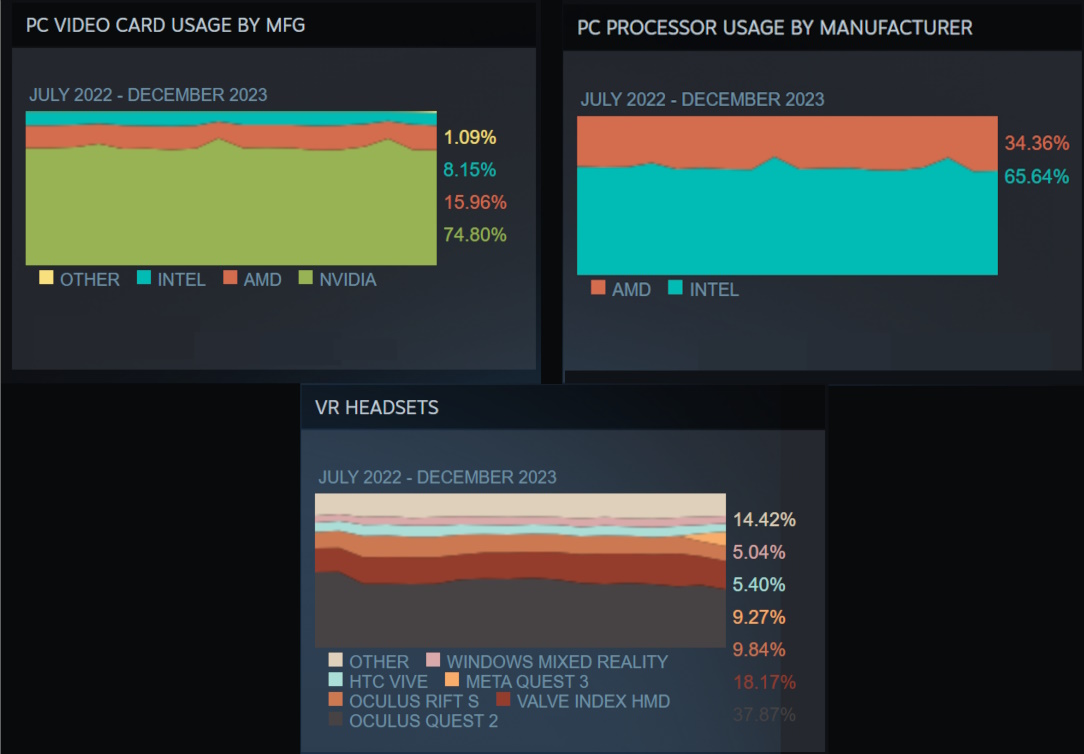In today’s diverse gaming landscape, developers are constantly faced with a balancing act: creating visually stunning experiences while ensuring accessibility for as wide a player base as possible. Steam’s monthly hardware and software surveys offer invaluable insights into the actual specs used by gamers, shedding light on the realities beyond high-end rigs and coveted graphic cards. By analyzing this data, developers can craft video game marketing and PR strategies that prioritize inclusivity, leading to a broader audience and potentially higher sales.
Democratizing Graphics: Budget Cards and Integrated Solutions
While Nvidia reigns supreme with a 74.8% market share, the dominance lies not just in top-tier cards like the RTX 3060, but also in budget options like the GTX 1650 and 1060. These cards, while not ideal for 4K gaming, are the workhorses of millions of gamers, capable of running some but not all titles at medium to low settings. This data reveals a significant segment of players who prioritize affordability and accessibility over cutting-edge graphics.
Even more surprising is the prevalence of integrated graphics. Intel boasts a 90% share in this category, indicating a massive population of laptop gamers. This trend underscores the importance of optimizing games for less powerful hardware, ensuring that the living room couch warriors can join the fray without sacrificing performance or enjoyment.

Processor Power: Striking a Balance Between Generations
Similar to integrated graphics cards, the PC processor market sees Intel leading with a 65% share. However, the data reveals a significant portion of users (around 28%) relying on older processors that might struggle with demanding games. This highlights the need to find a sweet spot between pushing technological boundaries and ensuring smooth gameplay for a diverse range of processors.
VR’s Two Titans: Oculus and Valve Lead the Charge
For developers venturing into the VR realm, the data speaks loud and clear: Oculus Quest, with its various iterations, holds a commanding 60% market share, followed by Valve’s Index at 18%. These two giants are poised to dominate the VR landscape in 2024, making them crucial platforms to consider when crafting VR game experiences.
Conclusion: Embracing Inclusivity, Amplifying Success
By analyzing Steam’s hardware data, developers can move beyond the hype of high-end specs and embrace a more inclusive approach to video game marketing and PR. Catering to budget cards, integrated graphics, and diverse processor speeds unlocks a vast potential audience, leading to increased wishlists, sales, and ultimately, a thriving gaming community. Remember, a game accessible to many is a game with the potential to win the hearts of millions. So, the next time you’re crafting your game’s narrative, consider not just the epic stories and dazzling visuals, but also the everyday heroes playing on their laptops and living room consoles. In this diverse and ever-evolving world of gaming, inclusivity is the key to unlocking true success.